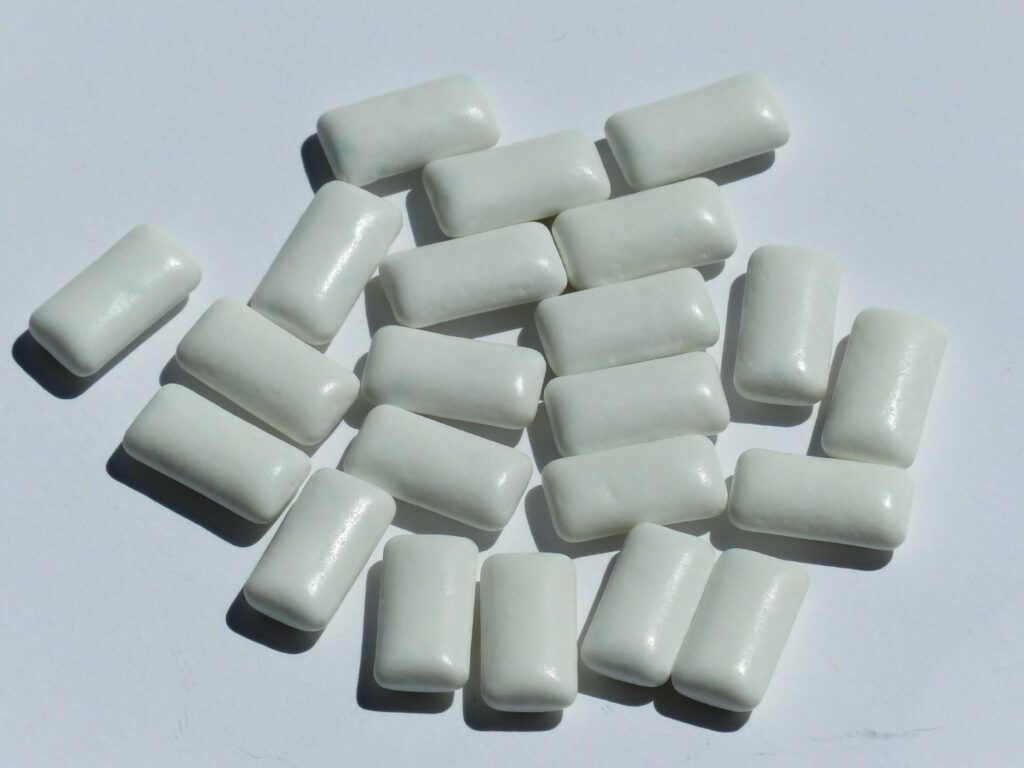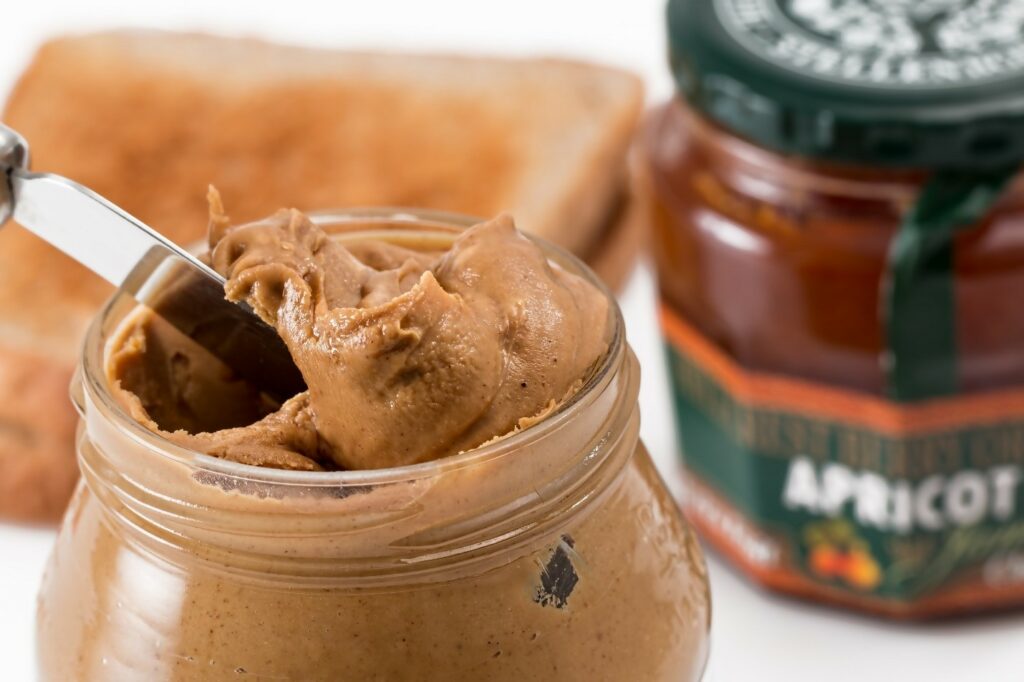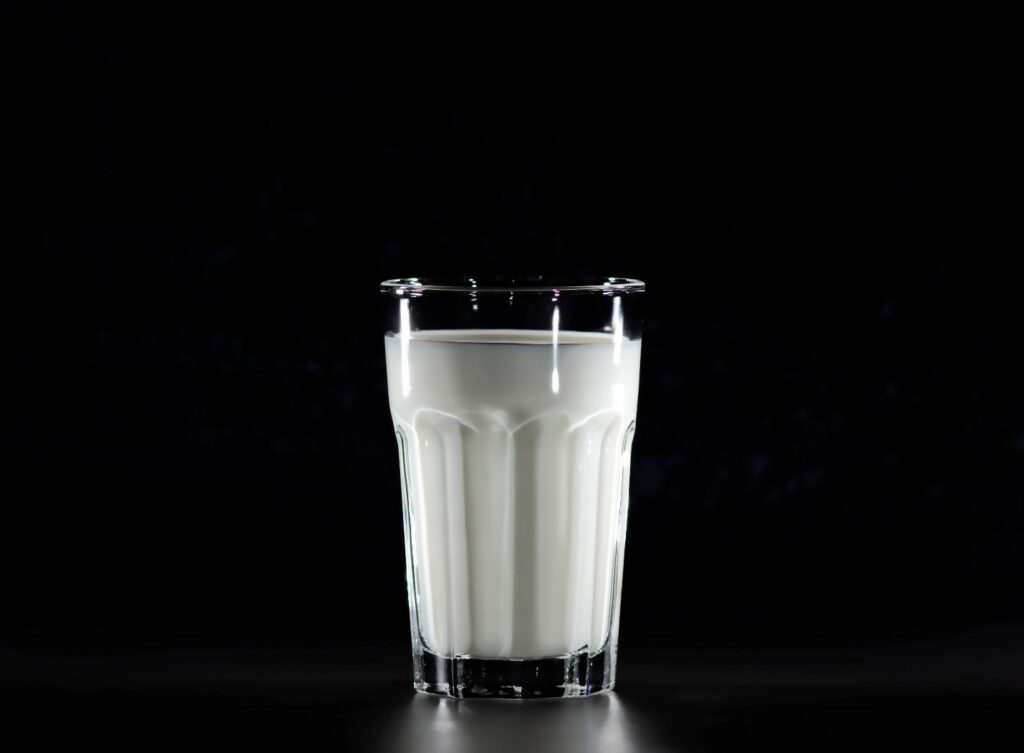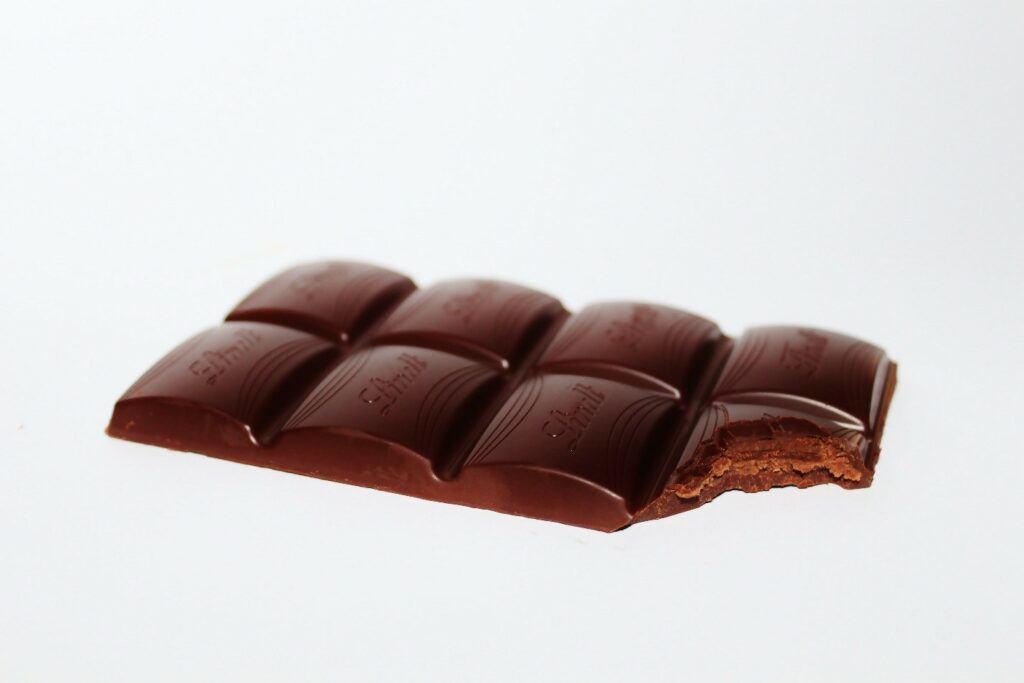30. Peaches

Peaches are rich in fiber and vitamin A. However, canned peaches and peach pit are harmful to your dog. Canned peach contains a high amount of sugar. They may also contain preservatives and xylitol, which are disastrous to your dog’s health. Additionally, the peach pit contains cyanide called amygdalin. Your dog’s throat may also be exposed to danger if he or she swallows a whole peach. It can stick in their throat. The serrated and rough surface can also irritate your dog’s intestines.
29. Persimmons

Persimmon seeds are dangerous to your dog. While persimmon without seeds is considered healthy, others argue that it is entirely not safe for your dog. Consequently, it is advisable to contact your veterinarian before feeding your dog persimmons. According to studies, persimmons contain a chemical responsible for intestinal obstruction in dogs. The chemical causes gluey mass and reacts with stomach acid. Symptoms include pits and seeds in your dog’s stool.
28. Ice cream

Ice cream contains a high level of calories, which can make your dog gain weight and cause other health problems. Ice cream also contains milk. Additionally, some brands of ice cream may contain chocolate. Chocolate has theobromine, which is hard for dogs to digest. The effects of ice cream can be manifested through the following symptoms: bloating, constipation, and diarrhea. For diabetic and obese dogs, ice cream can pose dangerous health problems.
27. Plums

Plums are only safe only if you chop them, though plum flesh is high in sugar content. The stems and seeds of this fruit contain cyanide, which is toxic to your dog. Additionally, plum pits have sharp ends, which can cause intestinal obstruction. Symptoms include; dilated pupils, panting, breathing problem, and painful intestinal blockage. If you suspect your dog has ingested plum trees, call your local veterinarian. Whenever you feed your dog plum flesh, ensure that you do it in moderation.
26. Tomatoes

Ripe tomatoes are healthy for your dog if taken in moderate quantity. However, green tomatoes and tomato plants are not safe. They contain alkaloids called atropine. If this your dog ingests this substance in large amounts, he or she may become sick. Tomato stems also contain solanine, which is also harmful when taken in large quantities. Symptoms to look out for include tremors, seizures, abnormal drooling, constipation, and diarrhea. For this reason, ensure you fence your garden and watch over your dogs.
25. Coffee

Coffee contains caffeine. The effect of caffeine is hazardous in dogs than in human beings. In severe cases, it can lead to death. There is no proven safe amount of caffeine for dogs. However, 1-2 pills in your dog’s diet can kill them. Symptoms of caffeine in your dog’s system include hyperactivity, vomiting, restlessness, seizure, and collapse. If you suspect your dog has taken some coffee, induce vomiting. It is also advised you give your dog doses of deactivated charcoal. If the symptoms persist, seek medical attention.
24. Raw fish

Salmon and trout are dangerous to your dog. They are said to be infected with a parasite called Nanophyetus salmincola. The parasites are harmful to your dog because they are infected with bacteria. Raw fish also may contain tapeworms harmful to your dog. If you have to feed your dog raw fish, freeze it. Freezing will kill the parasite. Symptoms include; fever, reduced appetite, diarrhea, lethargy, vomiting, dehydration. If a dog is not treated for more than a week, results can turn out to be disastrous.
23. Mushroom

If your dog consumes the wrong type of mushroom, things could turn ugly. Mushroom might poison your dog without you noticing it. For example, a species of mushroom called Amanita contains amanitin toxins, which can cause liver failure, sudden kidney damage in your dog. Worse, it can lead to death. Because it is hard to identify the safe type of mushroom, it is advisable to eliminate it from your dog’s menu.
22. Chives

All kinds of chives are toxic to your dog. They contain sulfoxides and disulfides, which are destructive to a dog’s red blood cells. Consumption of chives also causes gastroenteritis evident with mouth irritation and nausea. It increases the concentration of oxidants in the red blood cells. Therefore, the red blood cells’ membrane becomes fragile and bursts. This reduces the supply of oxygen in your dog’s system, resulting in anemia. Other symptoms include vomiting, discolored urine, weakness, and hypersalivation.
21. Salted Popcorn

Popcorn is rich in magnesium, manganese, fiber, phosphorus, and zinc, which are essential for your dog’s teeth. However, salt and butter are added to popcorns turn out to be disastrous to your dog’s health. The cause stomach upset, and exposes your dog to obesity. If you insist on feeding popcorns to your dog, ensure they are air-popped, without salt and butter toppings. However, excessive consumption may raise the amount of calorie level in your dog’s system.
20. Candy

Candy corns and hard corns are not safe for your dog. The sugar in candies causes dehydration and discomfort in dogs. Additionally, hard candies may break your dog’s teeth and hurt their jaws. The sugar content may cause high blood pressure and heart problems. Candies also contain xylitol, which is fatal to your dog. Look out for the following symptoms: seizures, vomiting, loss of coordination, and lethargy. Nonetheless, ensure you check the ingredients of all the candies to keep your dog safe from this harmful substance.
19. Liver

The liver can be the best food for your dog. However, excess consumption of liver in their system may be destructive to their bones and muscles. The liver contains a high level of vitamin A, which may expose your dog to toxicity, or hypervitaminosis. Therefore, ensure you maintain a recommended level of 2-3 times a week. Symptoms for toxicity include; weight loss, deformed bones, and anorexia. If you spot these symptoms, seek advice from the veterinary.
18. Corn On Cob

Corn on the cob can severely harm your dog. If he or she eats the whole cob or many pieces of it, it might lead to intestinal obstruction. The level of harm, however, depends on the size of the dog, and the size of the cob eaten. Symptoms to look out for include a lack of appetite, abdominal pain, diarrhea, dry heaves, vomiting, and lethargy. On the other hand, corn itself is not harmful. It is rich in lutein and zeaxanthin, which is a great antioxidant essential for your dog. However, it is not recommended regularly.
17. Chewing Gum

Chewing gums are not good for your dog, including gummy bears. If your dog swallows it, it may cause abdominal obstruction. Additionally, the sweetener used in chewing gums is xylitol, which is disastrous to your dog. It is safe to keep all types of chewing gum away from your dog. However, if you suspect your dog had swallowed a piece of chewing gum, seek medication immediately. Chewing gum might adversely interfere with your dog’s digestion if left for long.
16. Peanut Butter

Peanut butter is rich in protein. However, xylitol, which is a sugar-replacement sweetener, is harmful to your dog. While xylitol is considered healthy for human beings, it reduces the dog’s blood sugar level. Symptoms include staggering, disorientation, collapse. In severe cases, deterioration in sugar level might lead to damage of liver cells. Studies show that not all peanut butter brands are harmful. Therefore, to keep your dog safe, ensure you read the ingredients of the brand you have.
15. Raw Eggs

Eggs are good for your dog, especially cooked and boiled. They contain proteins, fatty acids, and amino acids. However, raw eggs may contain Salmonella or E.coli bacteria. Regular consumption of raw eggs also exposes your dog to biotin deficiency. Biotin supports healthy skin, improves metabolism, and digestion. Additionally, wax sprayed in most commercial eggs might endanger your dog. To be on a safer side, feed your dog with either boiled or cooked eggs.
14. Alcohol

Apart from seizures, alcohol can poison your dog through a condition called ethanol toxicosis. Symptoms for this condition include confusion, disorientation, and weakened motor functions. These same symptoms can be manifested in human beings. However, it is more disastrous in dogs. With alcohol in your dog’s system, stomach upset, difficulties in urinating, diarrhea, vomiting may be witnessed. In large quantities, the effect may be adverse. The dog may experience kidney or heart failure or slip into a coma.
13. Apple Cores

Apples are good for your dog. They are rich in dietary fiber, vitamin C, and vitamin A. They keep your dog’s teeth clean and freshened. However, take precautions. Ensure you remove the cores before feeding your dog the fruit. Apple seeds contain cyanide. A small content of apple cores will not harm your dog. However, continuous ingestions accumulate cyanides in your dog’s system, which can lead to hyperventilation, seizers, and coma in severe cases.
12. Garlic

Garlic contains N-propyl disulfide, a substance that damages hemoglobin. Eventually, the damage can cause rupture of the red blood cells, a condition known as hemolysis resulting in anemia. It can even cause organ failure or death. If your dog has taken garlic, he or she might experience gastrointestinal irritation and lethargy. Other symptoms are vomiting, lack of coordination, colored urine, pale gums, and hypersalivation. Contact your veterinarian immediately you suspect your dog has ingested garlic. Protect your dog from garlic ingestion by checking ingredients of the dog’s food, and keeping your trash covered to ensure your dog does not reach discarded garlic.
11. Yeast Dough

According to Merk Veterinary Manual, yeast dough is one of the most dangerous foods to dogs. In a moist, warm, and draft-free environment, yeast dough is expected to rise. Therefore, when fed to your dog, the dog’s stomach provides a conducive environment for it to rise. The rising can lead to the intestinal tract. Additionally, the yeast dough can ferment in the dog’s stomach, hence releasing toxic levels of ethanol into your dog’s bloodstream. Symptoms include unsteadiness, depression, seizures, weakness, hypothermia. If you suspect your dog has taken yeast dough, seek medication immediately.
10. Raisins

According to the ASPCA poison control center, 3722 calls involving raisin were received. Since raisins are dried grapes, the ingestion of it may cause sudden kidney failure. Veterinarians suggest immediate medication if you suspect your dog has taken raisin. The symptoms include excessive thirst, dry nose and mouth, pale gums, abnormal stillness, reduced urine production, and abdominal pain. There is no proven amount of raisin that is harmful to your dog. Therefore, it is not advisable to feed your dog raisins at all.
9. Grapes

The substance that affects dogs in grapes is linked to its flesh but is still not known. The implication is that even peeled grapes are harmful to your dog. The effects vary from dog to dog. However, even a small amount of consumption of grapes is fatal, with a greater possibility of acute kidney failure and lack of urine production. The symptoms include; seizure, loss of appetite, lethargy, oral ulcers, tremors, reduced amount of urine, dehydration, and vomiting, which occurs few hours after ingestion, and containing pieces of grapes. If you suspect your dog has taken grapes, induce vomiting within two hours. Except if your dog is unconscious, having breathing problems, or if you are uncertain of what your dog ate.
8. Sugarless Gum

Sugarless gum contains a 5-carbon sugar alcohol sweetener, Xylitol. Ingestion of xylitol increases the production of insulin in your dog, which drastically reduces their level of blood glucose. Other symptoms of xylitol in a dog’s system include vomiting, lethargy, collapse, loss of coordination, and seizures. I some cases, there can be intestinal, abdominal, and stomach bleeding. You may also notice dark red spots on your dog’s gum called ecchymoses. In severe cases, reduced blood sugar can cause liver failure.
7. Cheese

Like milk, cheese contains lactose, which is hard for your dog’s system to break down. However, the lactose content in cheese is low as compared to milk. Cheese contains calcium, protein, Vitamin A, Vitamin B12, Zinc, and Phosphorus, which are essential for your dog. It is, therefore, advisable to feed cheese to your dog, but not daily. Excessive consumption of cheese causes high blood pressure in dogs, which can ultimately lead to organ damage.
6. Milk

In spite of dogs feeding on their mother’s milk after birth, older ones experience difficulties in breaking it down. Milk contains lactose. Therefore, for dogs to digest it, they have to produce lactase, a special enzyme, to split the lactose into absorbable sugar, something that dogs’ systems cannot do. The inability to produce lactase is called Lactose Intolerance. Symptoms for the condition include; severe stomach issues, bloat, and loose stools.
5. Macadamia Nuts

The reasons behind macadamia nuts’ toxicity towards dogs remains a mystery. However, they have shown an inability to walk after taking macadamia nuts. Several cases have been reported in Vetwest Animal Hospital in a few months. Other symptoms may include weakness in the hind legs, vomiting, fever, muscle tremor, and depression. These symptoms are linked to non-fatal syndromes. A specific antidote for this toxin has not been discovered. Fortunately, with supportive medical attention, dogs recover from it.
4. Bacon

A study done by WHO in 2015 proved that bacon is a carcinogen associated with cancer. Dogs love meat. However, bacon is high in fat and salt content, which is heavy for a dog’s digestion system. A high amount of bacon in its system can cause pancreatitis, which is disastrous. A dog that has pancreatitis may experience digestion problems and difficulties in absorbing nutrients. If you want to feed your dog meat, experts recommend chicken meat. It is easier to digest and has nutrients good for your dog.
3. Chocolate

Chocolate contains theobromine and caffeine. Humans can easily digest these compounds. However, metabolism is slow in dogs. Therefore, any amount of chocolate allows this compound to build-up to a toxic level in your dog’s system. While chocolates are considered bad for your dog, some are worse. For example, cocoa, cooking, and dark chocolate contain the highest amount of theobromine. Milk and white chocolate have the lowest. Symptoms include seizures, irregular heartbeat, muscle tremors, internal bleeding, and severe hyperactivity. If your dog ingests chocolate, seek medication immediately.
2. Onions

Even a small amount of onion is harmful to your dog, whether cooked or raw. Onions contain chemicals called disulfides and thiosulphates. These chemicals cause conditions called Methemoglobinemia, hemolytic anemia, and Heinz body anemia. The conditions damage your dog’s red blood cells. Worse, they make the red blood cells to become fragile and burst. As a result, your dog becomes weak. Other symptoms may include vomiting, diarrhea, breathlessness, abdominal pain, discolored urine, lethargy, pale or yellow gums, and increased heart rate. If these symptoms manifest, seek medical attention.
